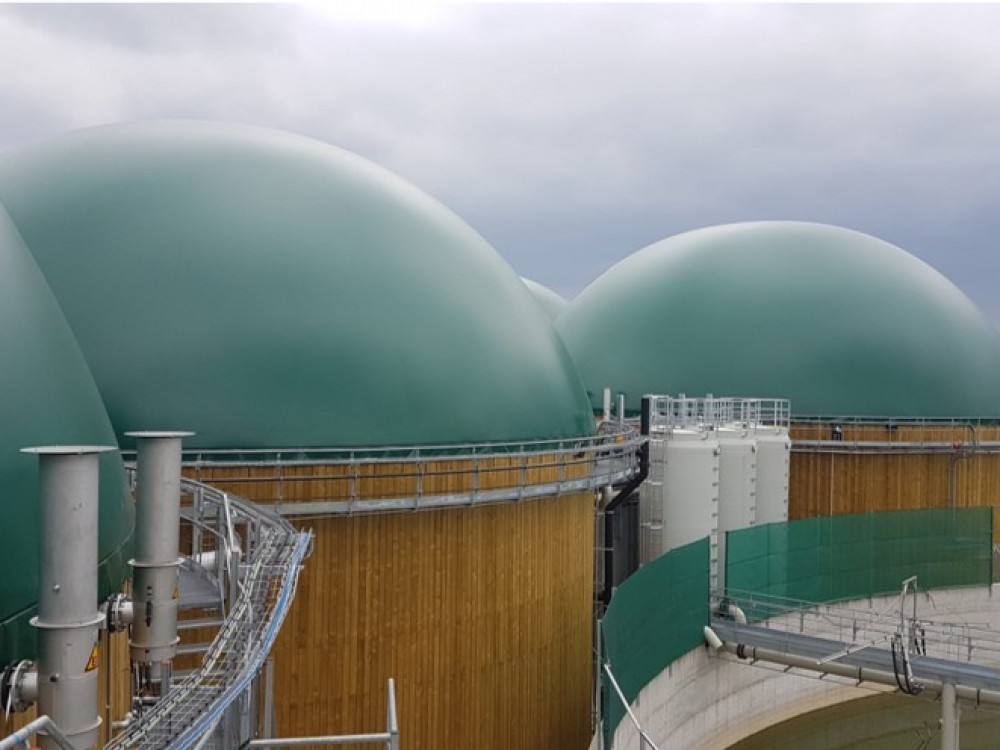
fPP/EVOH conductive liners offer unmatched gas retention, safety, and durability in biogas reactors.
Biogas production reactors demand liners that enhance gas impermeability, chemical resilience, static safety, and long-term durability. While traditional materials like PE and PVC have dominated the industry, their limitations in critical performance areas are evident. This article highlights why flexible polypropylene (fPP) liners with ethylene vinyl alcohol (EVOH) gas barriers and integrated conductive layer outperform traditional methods.
1. Superior gas retention with EVOH Barrier
EVOH’s molecular structure provides an unparalleled barrier against methane and CO₂, critical for maximizing biogas yield. Unlike PE membranes, which rely on thickness to reduce permeability, or PVC, which degrades under cyclic stress, EVOH’s co-extruded layer ensures near-zero gas leakage (<1% methane loss).
- EVOH vs. PE: PE’s semi-crystalline structure allows gas diffusion, leading to methane losses of up to 5–10% in some systems. EVOH’s rigid polymer chains eliminate microporosity, even at welded seams.
- EVOH vs. PVC: PVC membranes suffer from plasticizer migration under thermal stress, increasing permeability over time. EVOH remains stable under fluctuating biogas pressures, ensuring consistent performance.
2. Enhanced chemical and thermal resilience
Biogas production plants expose liners to aggressive acids, ammonia, and hydrogen sulfide.
- fPP vs. PE: While PE resists acids, it becomes brittle below -40°C, risking cold cracking in harsh climates. fPP retains flexibility from -30°C to 80°C, ideal for variable digester temperatures.
- fPP vs. PVC: PVC’s susceptibility to dehydrochlorination in alkaline conditions affects its chemical resistance. fPP’s non-plasticized formulation resists swelling and degradation, even in thermophilic biogas plants.
3. Conductive layer: static safety and proactive leak prevention
Static electricity poses a significant ignition risk in biogas environments. KRITIFLEX liners’ conductive layer eliminates this hazard by dissipating static charges, a feature which is absent in PE and PVC liners. Safety advantage: Integrated conductivity ensures continuous safety without additional equipment.
4. Installation flexibility and durability
- Cold-Weather Performance: fPP’s flexibility allows roll-based installation with cold welding, cutting labor by 30% versus rigid PE panels requiring heated tents.
- Seam Integrity: fPP fusion welds achieve 100% seam strength, outperforming solvent-bonded PVC and extrusion-welded PE.
5. Sustainability and regulatory compliance
fPP is fully recyclable, aligning with EU circular economy norms, while PVC disposal generates hazardous chlorine byproducts.
Conclusion: Leading change in the biogas sector
fPP/EVOH conductive liners address the shortcomings of PE and PVC with a blend of innovation and practicality. By combining EVOH’s impermeability, fPP’s durability, and static-safe conductivity, Plastika Kritis delivers a solution that enhances safety, reduces emissions, and aligns with global sustainability goals. As industry leaders demonstrate, adopting these liners ensures compliance, reliability, and a competitive edge in the evolving biogas sector.
Explore technical specifications or connect with our team at www.plastikakritis.com or sales@plastikrakritis.com to learn how our liners can support in biogas digester performance.
